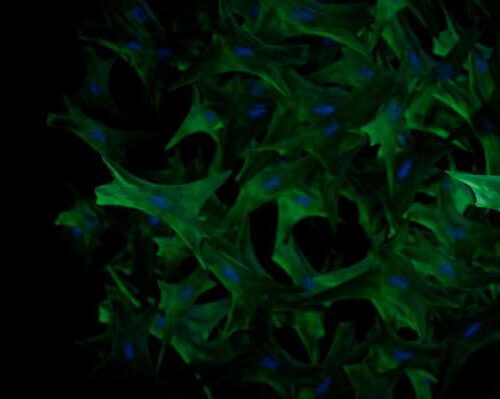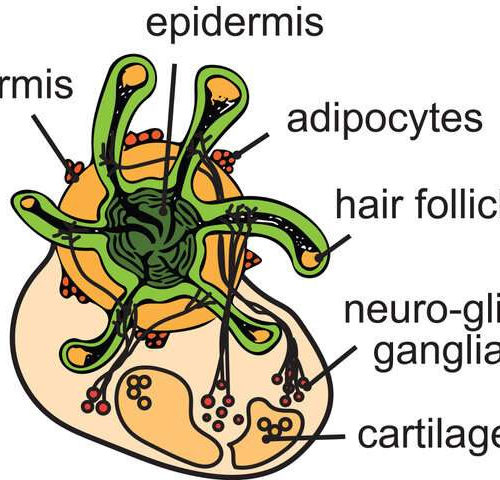by NIH/National Human Genome Research Institute Fibroblasts, shown in green, are cells that connect tissues and organs in the body and play an important role in healing wounds. Genomic variation in the STAT4 gene causes disorganized fibroblasts that fail to heal wounds properly. The nuclei of the fibroblasts are shown in blue. Credit: Ernesto Del Aguila III, NHGRI...
Tag: <span>Genetic skin disorder</span>
Hairy, lab-grown human skin cell model could advance hair loss research
by Oregon Health & Science University skin model in the lab that could be used to better understand and treat hair and skin disorders. Credit: Karl R. Koehler and Jiyoon Lee, Boston Children’s Hospital/Harvard Medical School. A new, hair-sprouting dollop of human skin created in the lab might one day help prevent hair loss. Organoids...
Artificial intelligence jump starts clinical trial for rare genetic disease
by Bob Shepard, University of Alabama at Birmingham It was a pretty simple e-mail. Just a couple of lines. “It looks like low-dose ketamine is an up-regulator for ADNP. Do you think this makes sense for ADNP patients?” Matt Might sent that e-mail to Matt Davis on Feb. 18, 2019. Might is the director of...
The origins of trypophobia
by Chrissie Giles, Mosaic Julia was around 11 the first time it happened. She let herself into her dad’s apartment in Malmö, Sweden, dropped her schoolbag and flopped on to the sofa. She switched on the TV and turned to her favorite channel in time for the cartoons. The screen filled up with a cartoon...
Study finds cause of, and possible cure for, genetic skin disorder
Human skin structure. Yale scientists have discovered the cause of a disfiguring skin disorder and determined that a commonly used medication can help treat the condition. About one in 200,000 people are affected by a group of severe skin disorders known as the ichthyoses (ik-thee-oh-sees), which feature dry, scaly, or thickened skin. Although treatment with...



